How tagging works
Digital performance insight is underpinned by tagging | |
Tags are code that run in a user’s browser when they visit your website. They are also known as pixels | ||
The better you understand how tagging works, the more confident you will be to make improvements | |
The simplest kind of tag sits on every page. When loaded, it sends a page view | |
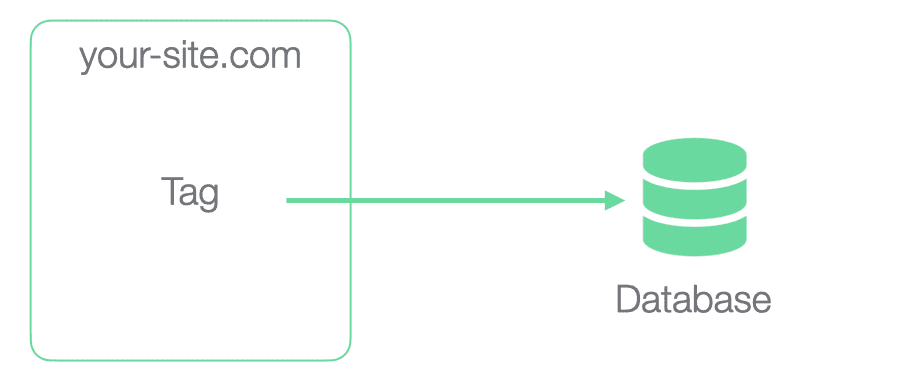
- When a tag fires it sends information to an external database, such as Google Analytics or HubSpot
- Google Analytics can structure this information in various way with goals & funnels e.g. “if the tag fires on a checkout page, count it as a conversion”
- Google tags are called gtag (aka Global Site Tag; Universal Analytics). These are replacing Google’s older tags (analytics.js, ga.js & ec.js)
As well as being installed directly on the page, tags can be installed in containers, using a Tag Manager | |
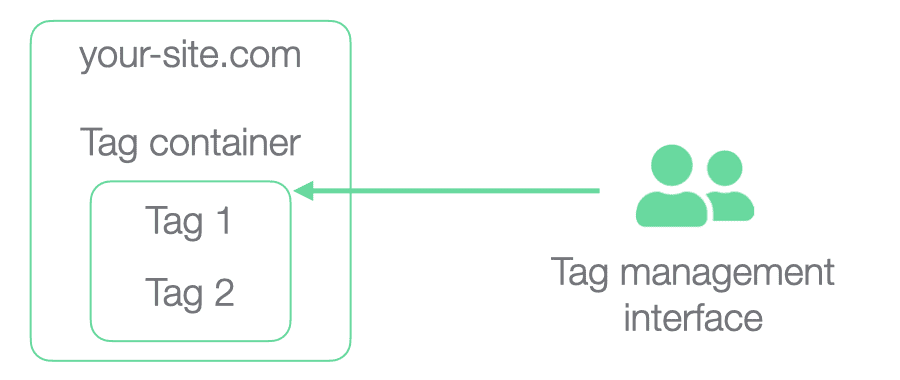
- Tag managers allow non-technical people to edit tags (e.g. to set up new analytics providers), and debug them (e.g. with Google Tag Manager’s Preview Mode)
- Tag managers make it easy to give the same configuration to multiple tags, e.g. using variables
- Most websites have just one container, but it’s possible to have separate ones e.g. for global & local teams
Sometimes tags need to get information from the website, such as the value of a transaction, and fire at specific moments | |
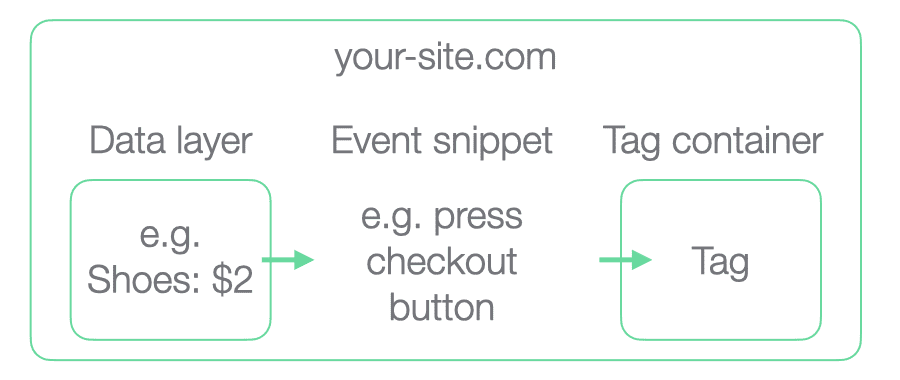
- Using event snippets gives flexibility. For example rather than having separate checkout confirmation pages, a conversion can be recorded on a button press
- This integration involves co-ordination between what information is available in the data layer and what information the tags require, i.e. co-ordination between marketing and web developers
When looking at advertising ROI, the first step is to record the ad click | |
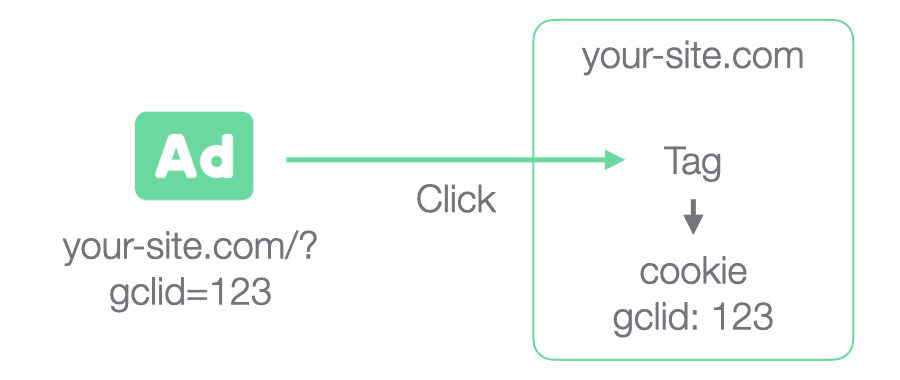
- When a user clicks on an ad, a Google Click Identifier is created (GCLID). This is passed to the website via the link. This is called auto-tagging
- On the website the Google tag saves the GCLID in a cookie
Some time later, if the user converts, the details of the ad click are sent to the database, along with the conversion details | |
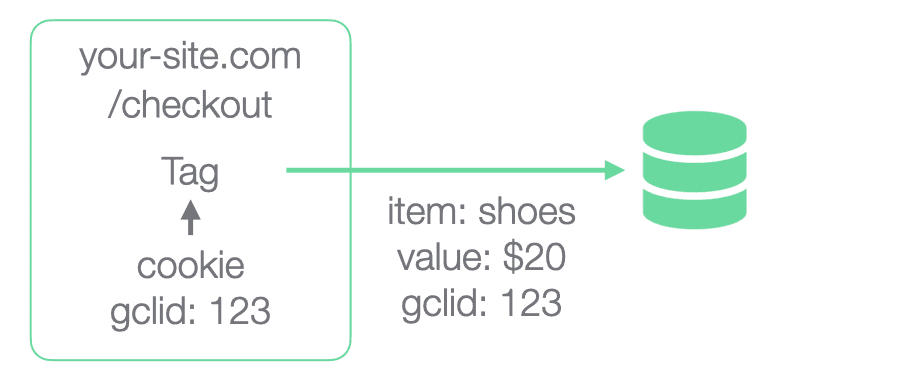
- Now, by combining how much was spent on the ad with the value of the conversion, it’s possible to see the ROI of a campaign
- If more than one type of advertising and tracking is happening at the same time, then conversions might be counted more than once. To address this issue between Display and Search, Google offers Floodlight tags
Tips | |
- These diagrams cover one property which means it has one Google Analytics ID (which looks something like UA-123456789-1)
- If your site has multiple domains like blog.site.com & app.site.com, you can set up cross-domain tracking to treat these as one
- It’s easy to make mistakes with tags, such as double counting. The Google Tag Assistant is a great way to see what’s going on
- Different questions are best answered in different ways. See 1-page guide to How to set up marketing analytics
Third party cookies | |
- The cookies we are talking about here are “first party cookies”, meaning that the website that is placing the cookie is the one the user is visiting. “Third party cookies” are when a user visits a website that has ads, and those ads place cookies
- Third party cookies are blocked on iPhones, and Google has announced that it will phase out third-party cookies in Chrome by 2022. This increases the relative attractiveness of Google Ads